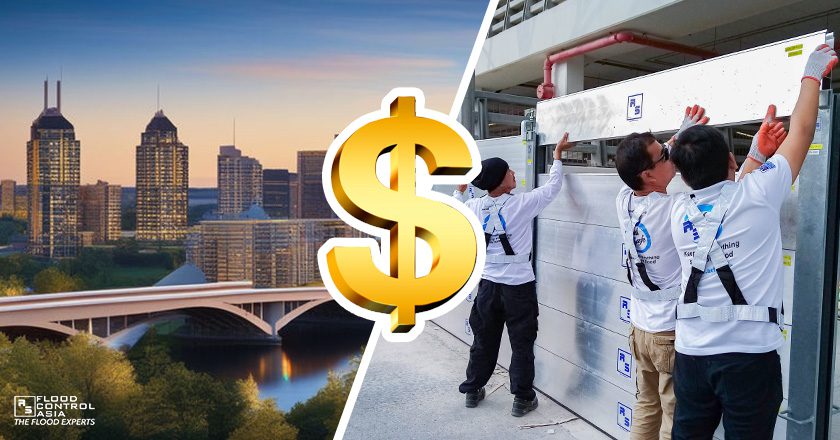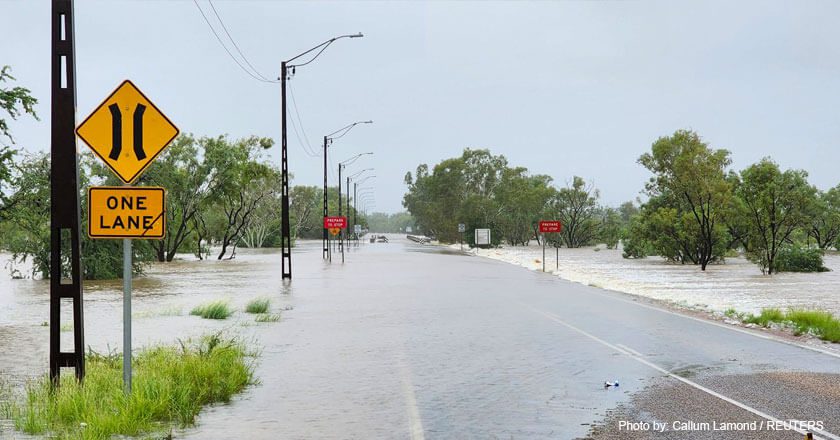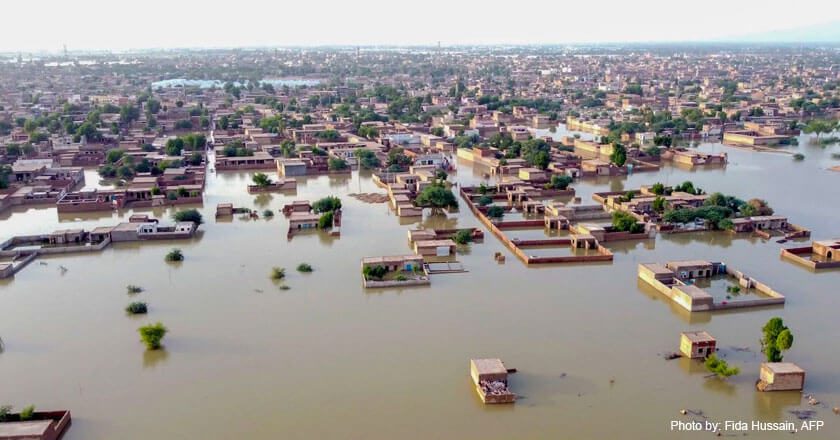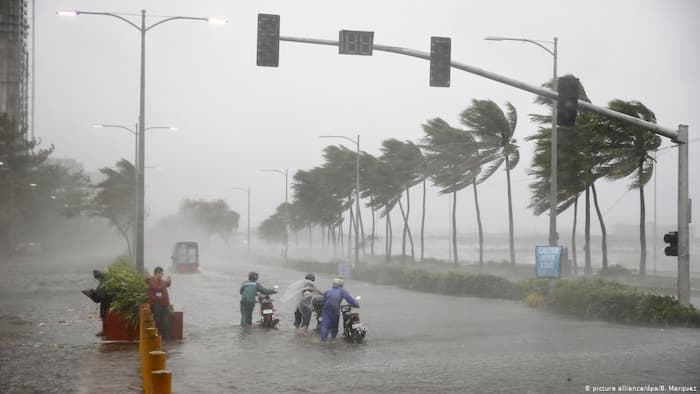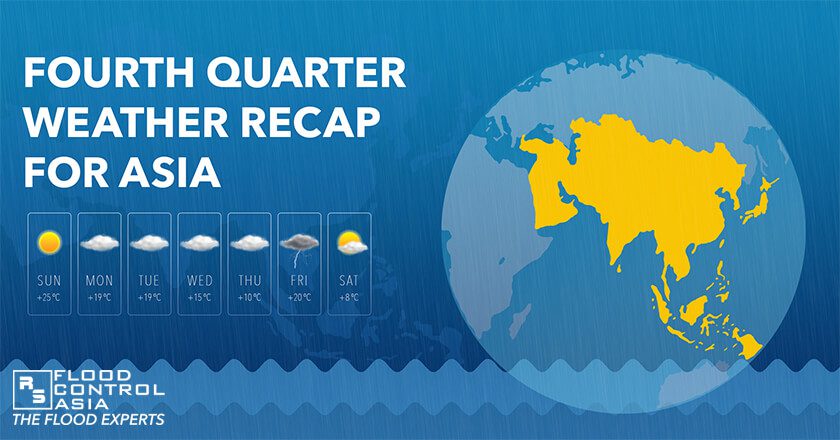The Bitter Truth about Southeast Asian Floods | Part 2
March 25, 2021 | Created by: Andreas Klippe | Comments
Floods are a common sight in Southeast Asian countries. What could be the reasons, effects, and solutions to these floods?

In Part 1 of my blog, I showed the flooding situations across Southeast Asian countries in 2020. I also mentioned that as these floods worsen, so are their negative impacts on the environment, the economy, and society as a whole.
As a continuation, we will answer the following questions that I posted in that preceding blog article:
- What really are the causes of Southeast Asian floods?
- Why does it seem to worsen as time goes by?
- What are the consequences of these floods?
- Is there a solution for this?
SUBMERGED AND ENGULFED ASIA
There are a couple of reasons why Southeast Asian floods are very common. In my previous blog, “The ‘Rainfull’ Parts of the World,” I pointed out two reasons: 1) Location and 2) Climate.
- Location — Tropical countries, located along bodies of water, are most likely to experience more rain than elsewhere in the world.
- Climate — Generally, warm air can hold approximately seven percent more water for every one degree Celsius increase in temperature in a range of 10 to 40ºC. Above, it is even more. Hence, the higher the temperature is, the more moisture there is in the air.
Climate change is also a key indicator of the worsening flooding situations in the region. I also mentioned in my blog, “5 Horrifying Effects of Climate Change that You Need to Know,” that the rapid warming of the planet contributes to the strength of the storm.

WHY ARE WE FLOODED?
Though climate, location, and climate change can be the root causes of Southeast Asian floods, other factors make matters worse. In Jacqueline Torti’s study titled, “Floods in Southeast Asia: A health priority,” she discussed other issues that can rub salt to the already painful wound. These are:
- The problem with solid waste management systems
- Limited resources, within low-income countries, that are not used for flood defense
In addition to those, I want to list some more specific reasons for the worsening Southeast Asian floods:
- River overflow that can worsen because of mining practices and the rupture of weakly-constructed dams.
- Overtopping of reservoirs and other bodies of water.
- Extreme urbanization that transformed the natural environment into concrete, bricks, and steel.
- Canal and narrow waterways that are already old, lost, cemented, or clogged.
- Failure of the urban drainage system.
THE FALLOUT
Loss of property, health problems, and death are the major repercussions of flooding. Each can have a continuing impact on others.
1— Loss of property
Loss of assets, loss of money, loss of livelihood are some of the aftermaths of flooding.

Residences, buildings, cars, furniture, office supplies, and many more assets submerged under muddy water are never a pleasing sight to behold. This damage to property can bring financial strain to the people involved and can also add to tons of garbage collected after the flood.
2 — Health
According to Torti, people can be exposed to health problems before, during, and after the floods.

The health consequences that come as a result of flooding are not limited to physical ones. More than physical diseases that can be caused by mosquitoes, rodents’ excrement in the water, and contaminated food, mental or emotional strain is also a major health problem.
3 — Death
The worst-case scenario is if these health problems can eventually lead to death. Death is the last thing we want to think about during flooding disasters. To lessen the number of deaths, government and non-government units are doing their best to provide help and rescue to those affected by the typhoon.
However, these health problems are not the only causes of death. Miserable circumstances can also happen when people are in the evacuation centers or when they are on their way to rescue.

ELIMINATING THE FLOOD PROBLEMS
To counter flood problems, national and local government units of the countries comprising Southeast Asia have been burning the candles at both ends to not lose the battle against flood. Some of the interventions as noted by Torti are as follows:
- Deploying sandbags.
- Setting up detection and early warning system technologies.
- Improvising housing model (i.e. in Bangladesh).
- Modifying agricultural practices (e.g. planting of flood-resistant trees).
- The building of more refugee sites.
- Raising roads to a level that is higher than an expected flood.
These efforts undoubtedly helped many people. Yet, they can also be unsustainable because of the lack of coordination and engagement among the community. In addition to that, the following also contributes to this huge problem:
- a lack of proper information dissemination,
- a lack of funding,
- the worsening condition of flooding.
Lastly, the lack of sustainability and efficacy of some of the flood solutions also contribute to this seemingly losing battle.
JUST LIKE IN THE DAYS OF NOAH
This flooding problem is pushing everyone affected at their wit’s end. The past year, 2020, has shown us that this problem is not unique to one country alone. The thing is, we know the reasons for flooding, we know the consequences, but time and time again, it has been proven that we have never gotten ourselves truly prepared for it. Rather than preparing before the floods, we are preparing during the floods — when it is too late to save those important to us.
The thing is, we know the reasons for flooding, we know the consequences, but time and time again, it has been proven that we have never gotten ourselves truly prepared for it.
We thought we were doing just fine but when the flood came, we were “flooded out” again with problems. We thought we carefully planned out flood mitigation just like how biblical Noah thoroughly prepared by building the Ark. We thought we were so ready.
Yet, we did not really get ourselves ready. Like in the days of Noah, we were just like those people outside the Ark, who started to worry when the downpours came.

What can our local government units do? What can our national governments do? What can other nonprofit organizations do? Above all, what can we do?
THE POST-DILUVIAN FLOOD SOLUTION
Noah built the ark for 120 years and saved his family and the animals. Because of that, the post-diluvian age was made possible. In our time, we do not have an ark. What we have are modern flood solutions that will not take us 120 years to acquire.

These flood control solutions are made for 21st-century worsening flooding conditions. Their material, efficiency, movability, among others, can guarantee protection to the property and the people.
Let’s discuss some of the problems that these modern flood protection systems can solve.
- Time problem — These barriers can be deployed single-handedly in a matter of minutes. Actually, some, in just 15 seconds. No need to bring the things up to the higher floors of the house. Just deploy the flood barriers.
- Rising level of floods — You don’t need to raise the level of your roads. Raising the levels of the road will not solve the issues of the houses located along the road. These houses get flooded more terribly. With modern flood control solutions, your property is properly assessed so flood control engineers can provide you with the best protection.
- Worsening flooding situation — The strong pressure of the raging floodwater will stop right there in front of the barriers. Modern and state-of-the-art flood barriers are made of excellent materials. Demountable and door/gate types can be made of aluminum. On the other hand, heavy-duty gates and automatic systems can be made of stainless or hot-dipped galvanized steel. But in all cases, they are heavy-duty and non-rusting. These German-engineered flood technology have EPDM seals (Ethylene Propylene Diene Monomer) that can withstand extreme temperatures and will remain flexible for decades.

These German-made flood protection barriers are the better alternative to sandbags and a great addition to existing interventions. Because of their efficiency, the return of investment pays off after the first flooding.
In 2020, we saw devastating disasters deluge many countries in Southeast Asia. In 2021, we can only hope that the next time an ocean of floodwaters comes upon us, we have already found the lighthouse that will save our properties, our families, and ourselves.
To learn more about the latest flood protection technology, subscribe now to our Flood Expert Tips (IF YOU HAVEN’T YET!). #


